Monument Valley alternatives: Horseshoe Bend and Antelope Canyon
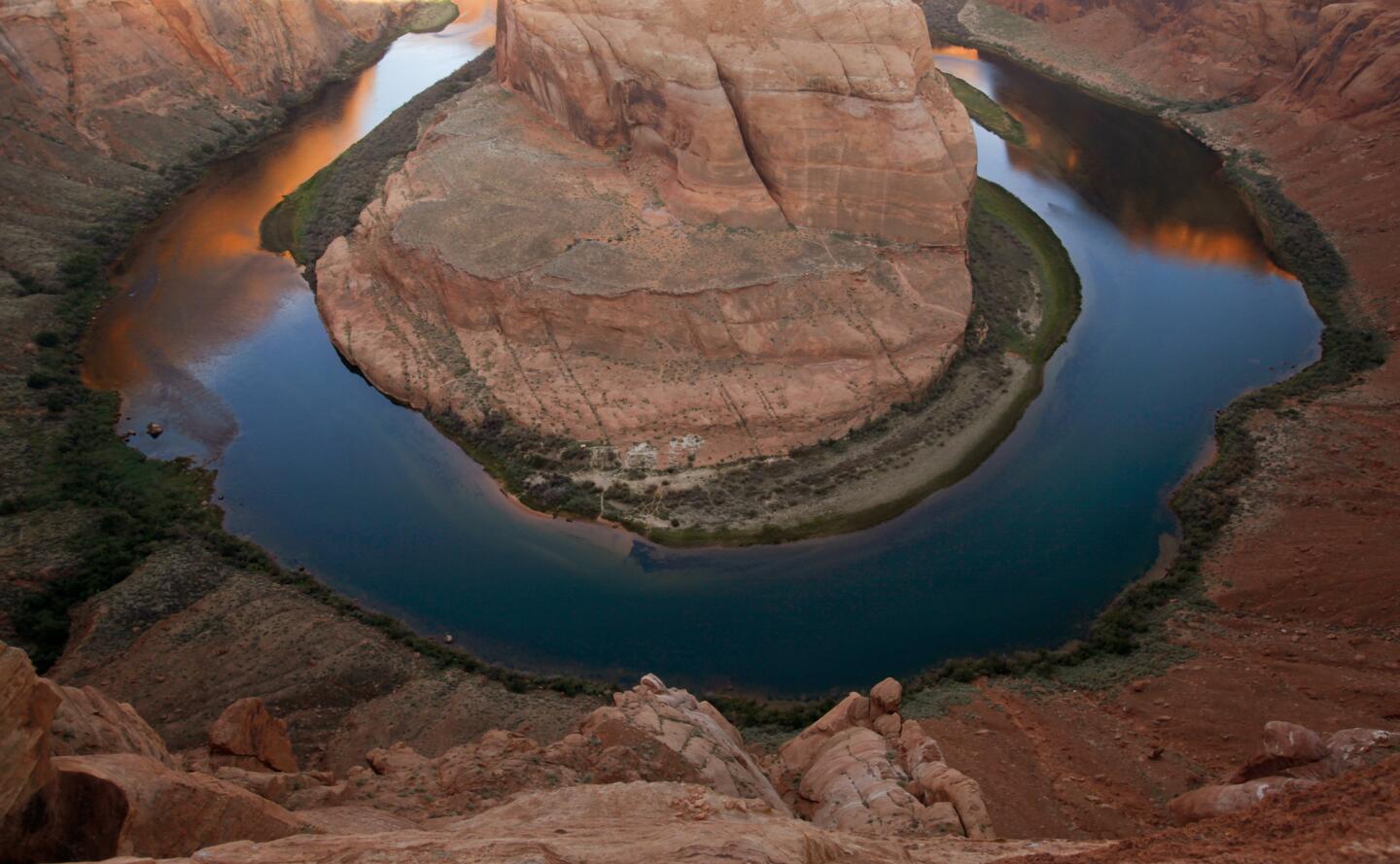
At Horseshoe Bend -- about four miles from the Glen Canyon Dam and Lake Powell -- the Colorado River makes a 270-degree curve. (Mark Boster / Los Angeles Times)
Page, Ariz., is the jumping-off point for these swirling, abstract-painting-like geological wonders.
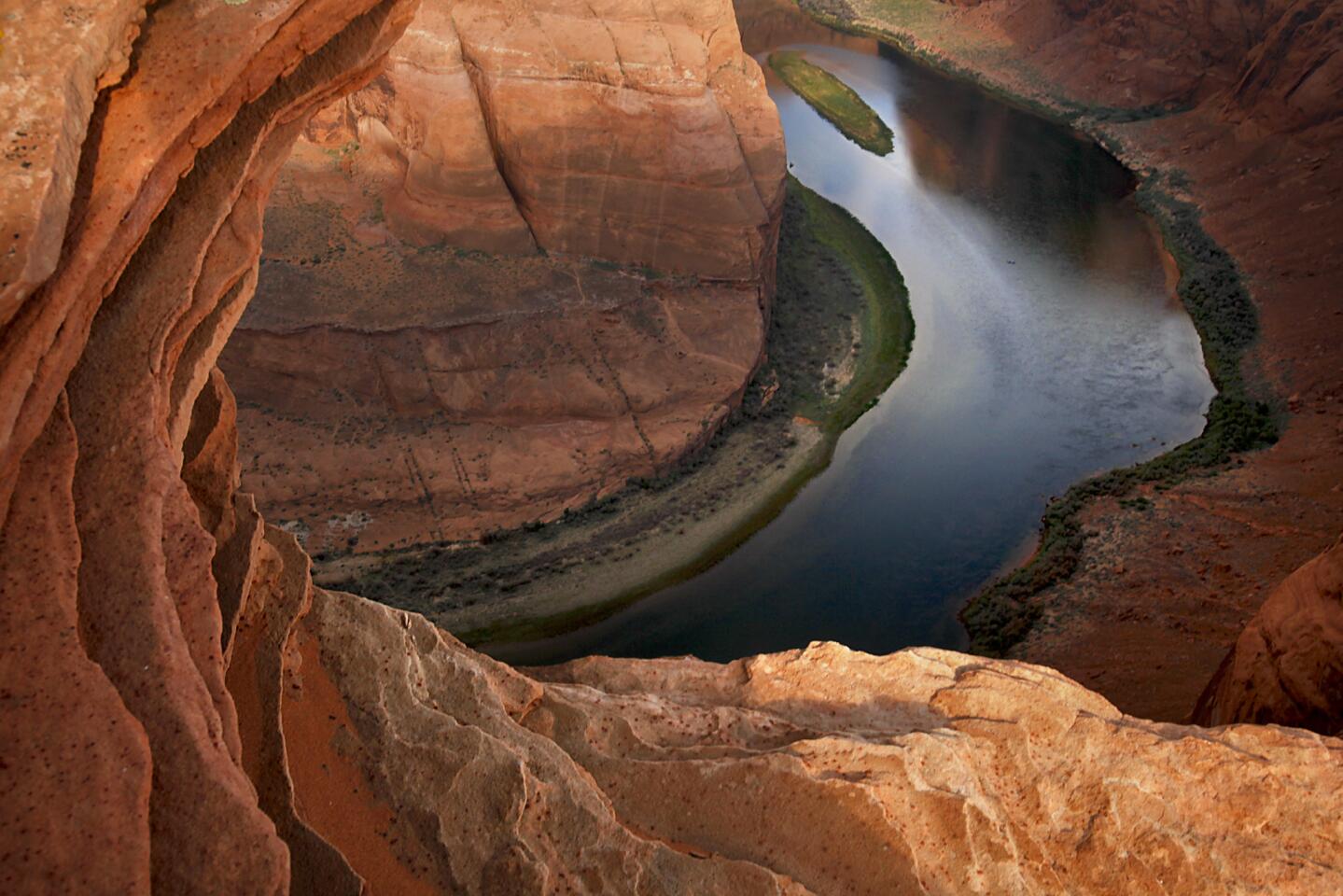
Another view of Horseshoe Bend near Page, Ariz. At sunrise or sunset, the play of land, water, light and shadow is doubly dramatic and challenging for a photographer seeking that perfect exposure. (Mark Boster / Los Angeles Times)
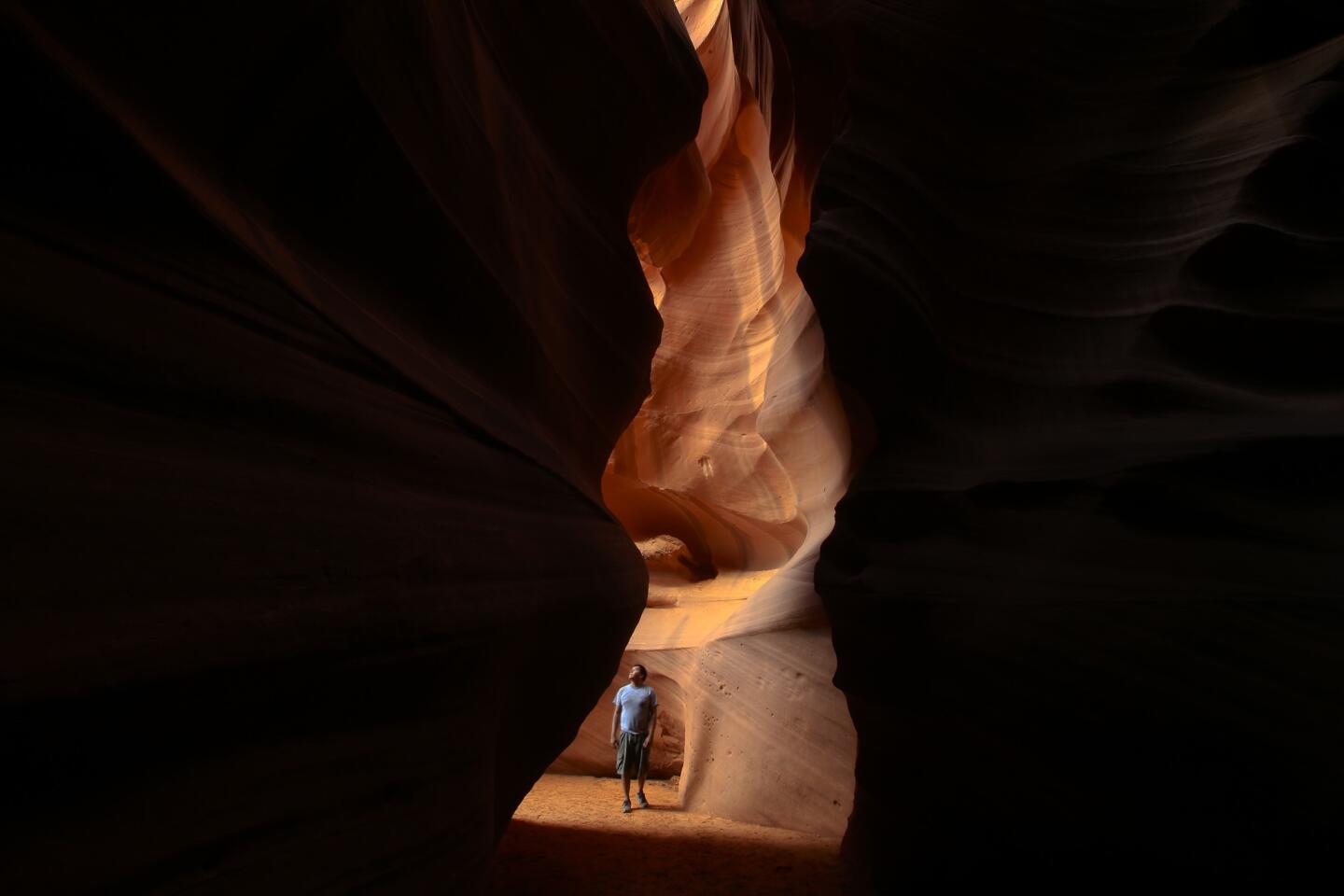
Navajo guide Raymond Chee stands in the opening to Antelope Canyon near Page, Ariz. The canyon, part of Lake Powell Navajo Tribal Park, is carved in large part by monsoon runoff and is up to 120 feet deep with just a ribbon of blue sky above. (Mark Boster / Los Angeles Times)
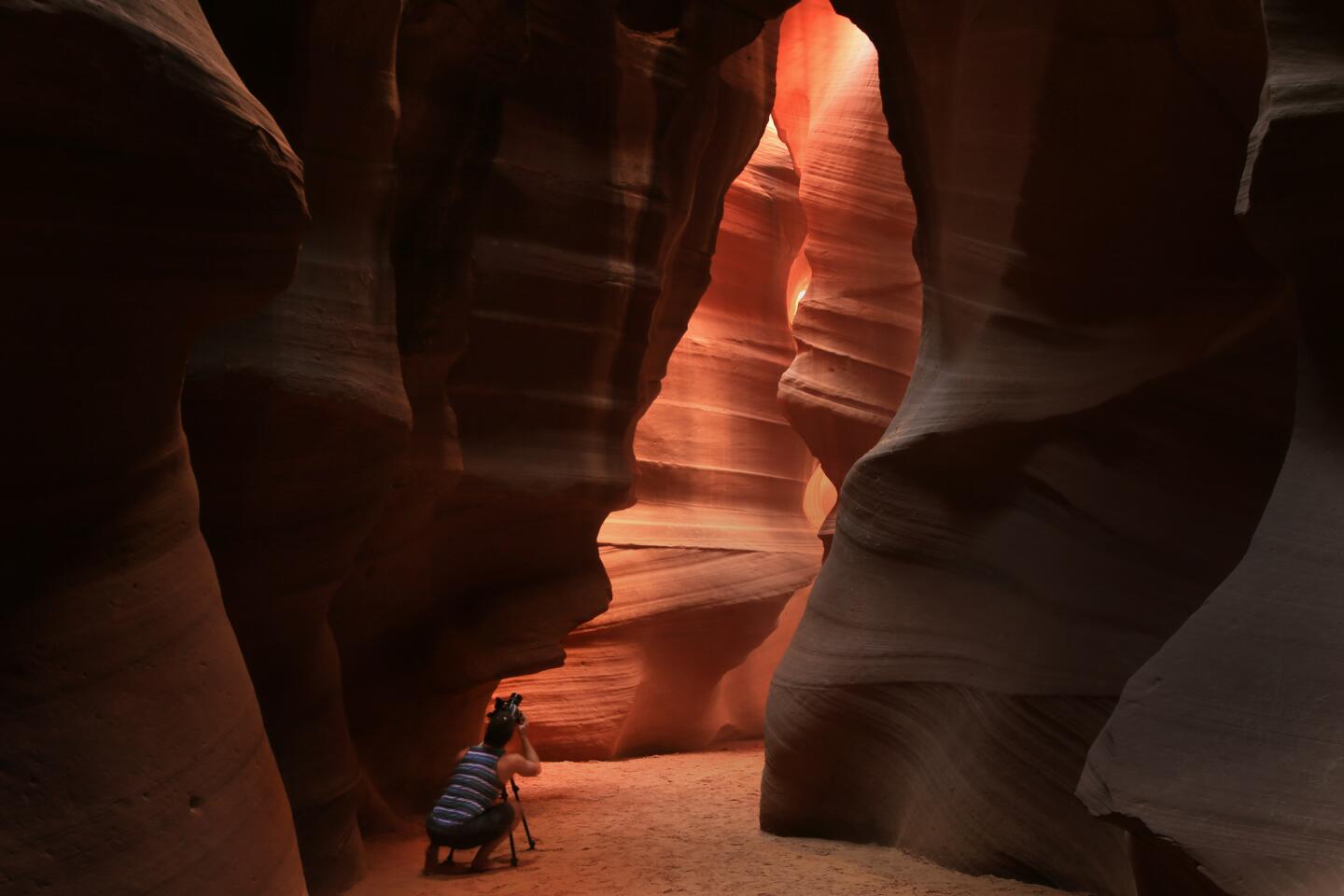
Filtered light, rich colors and varied textures of Antelope Canyon’s sandstone walls create remarkable effects -- one moment, frozen flames, the next, stretching taffy. A photographer works to capture them. (Mark Boster / Los Angeles Times)
Advertisement
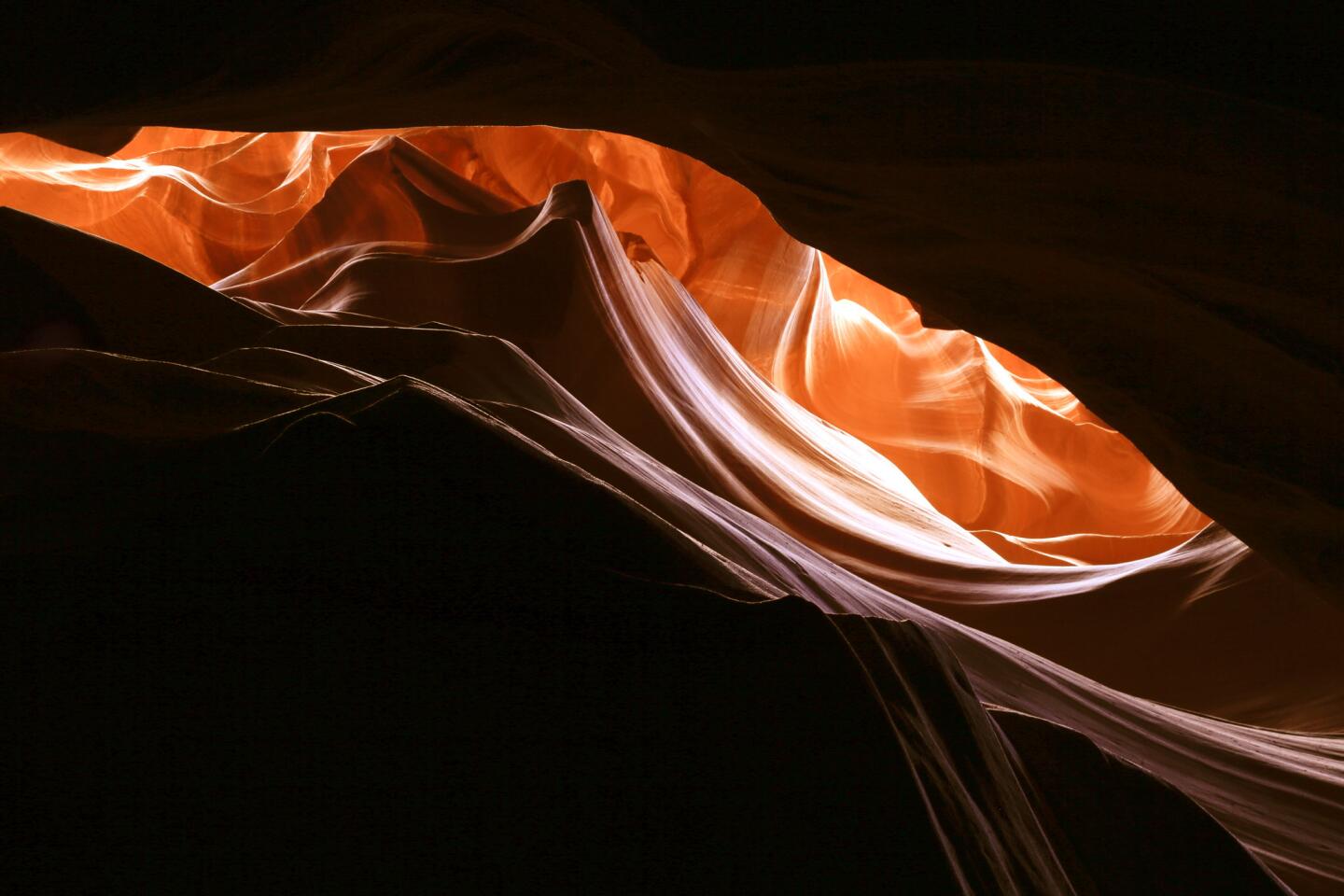
Sunlight plays across the sculpted texture of Antelope Canyon. Visitors cannot enter without a guide, or at all if rain is expected upstream. (Mark Boster / Los Angeles Times)
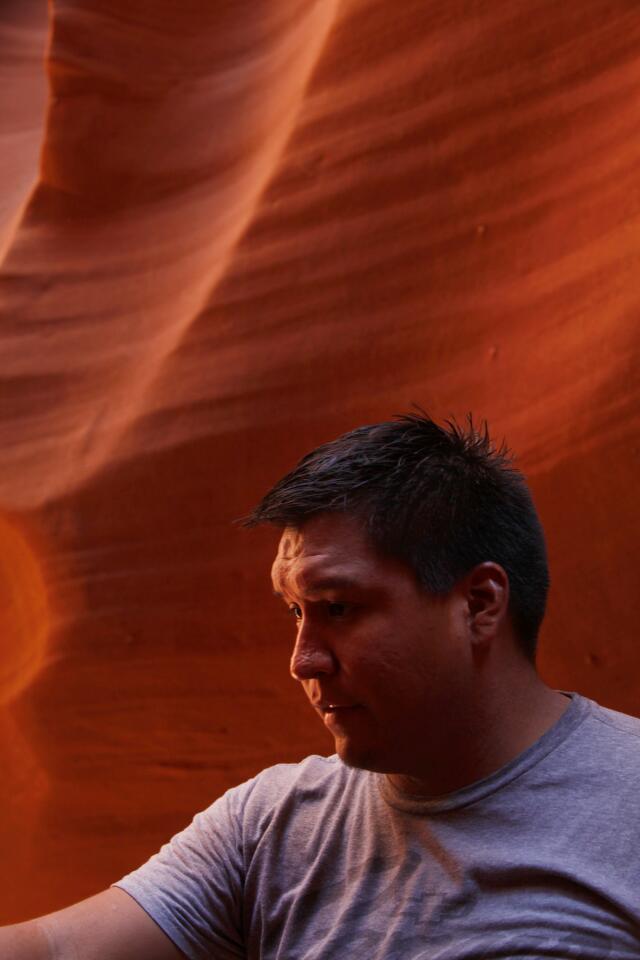
Navajo guide Raymond Chee stands in Rattlesnake Canyon near Page, Ariz. (Mark Boster / Los Angeles Times)
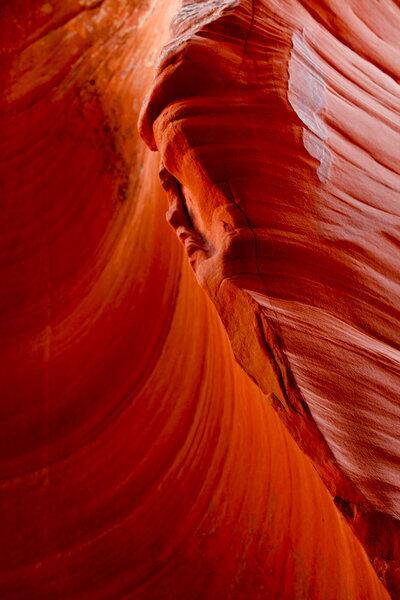
Deftly carved by water, wind and time, the swirling walls and ceilings of Rattlesnake Canyon glow in various hues as the sun starts to dip in the late afternoon. (Mark Boster / Los Angeles Times)
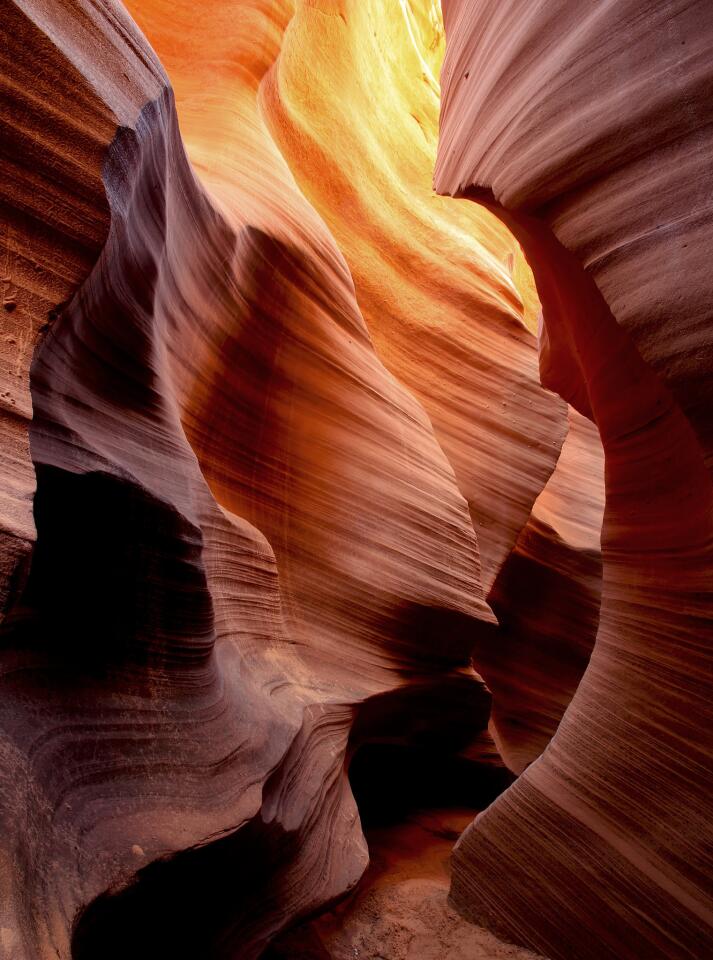
More walls in Rattlesnake Canyon. Rattlesnake, Antelope and Owl canyons are just a few hours’ drive from Monument Valley. (Mark Boster / Los Angeles Times)



